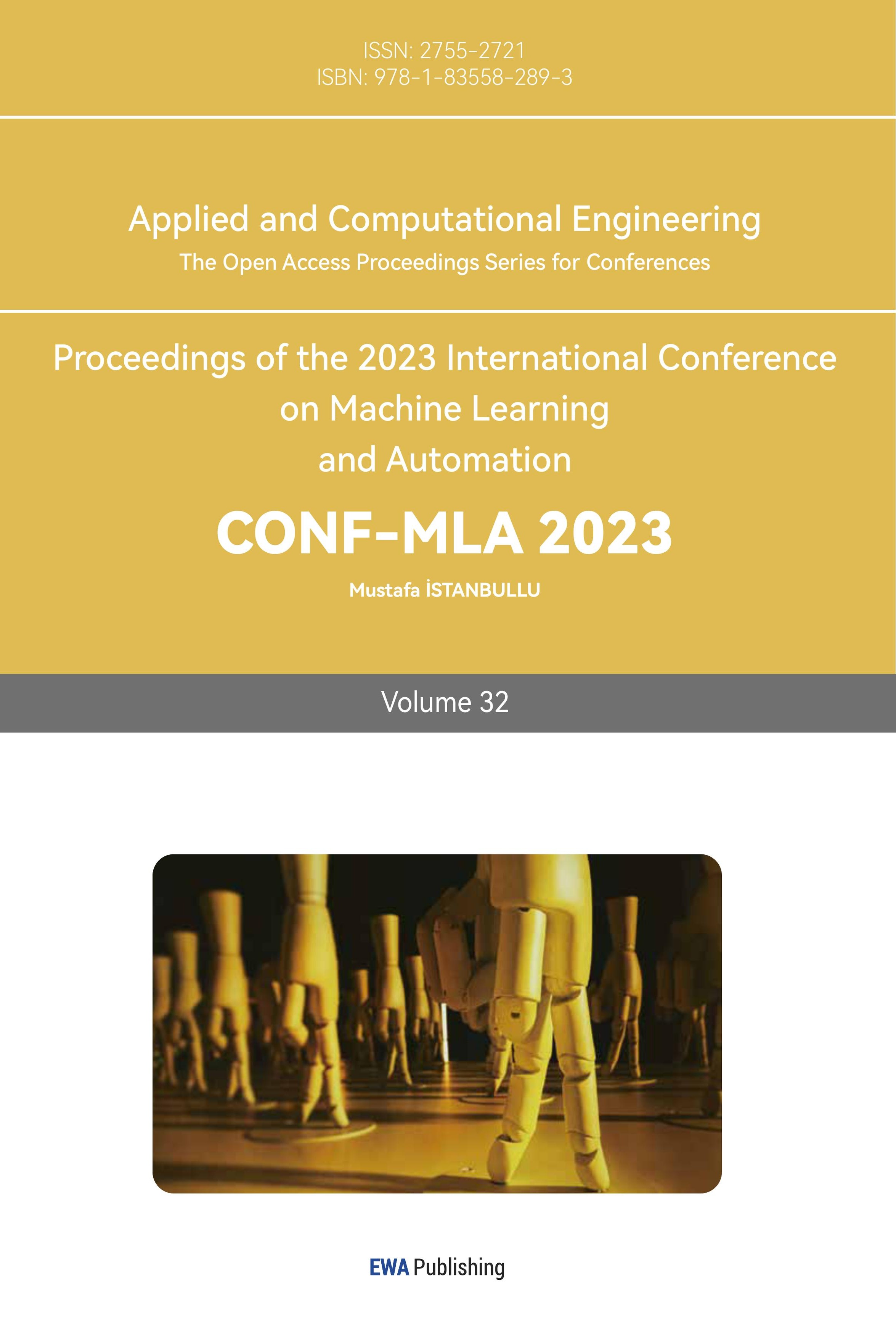References
[1]. Deng Ruijuan, Chen Qianqian.(2021) Introduction of the Higher Grade Eula Equation [J]. Red River Academy Journal, 19 (02): 149-150
[2]. Li Jianxiang, Li Ling.(2016) The application of variable substitution in the solution of differential equations [J]. Scientific advice (educational and scientific research), 2022(08):123-127.
[3]. Huang Fei, Geng Jie.(2018) A Class of Reducible second-order homogeneous linear equations with variable coefficients [J]. Journal of Hebei North University (Natural Science Edition),34(09): 7-921.
[4]. Jie Liu.(2000) Different solutions to the vibration equation of a single pendulum [ J ] . Journal of Liaoning Teachers College (natural science edition) , 2000(02) : 26-27.
[5]. Ju Yanqing, Zhang Fenglei.(2010) Movement analysis of simple pendulum under the action of comprehensive factors [J]. Liaodong Academy Journal (Natural Science Edition), 17 (02): 151-153.
[6]. Jiangshan, Zhang Yan, Sun Meiling.(2019) Comparison of the primary values of the equation of common differential differentiation with the application of the Long-Kuta method [J]. Journal of Science of Teachers′ College and University, 39(12):12-15.
[7]. Chen Yan.(2019) Explicit solution of second order Linear differential equation initial value problem with variable coefficients [J]. Journal of Jiamusi Vocational College, 2019(05) : 287-288.
[8]. Yang Wenjin, Wang Hongli, Liu Caiyun, etc. . (2020) using MATLAB to determine the motion characteristics of single pendulum theoretical research [J]. Journal of Southwest Normal University (natural science edition) , 45(11) : 167-170.
[9]. Ju Yanqing.(2006) Comparison of several approximate formulas for the period of a simple pendulum[J]. Laboratory Research and Exploration, 2006(05):585-587.
[10]. Ma Kun. (2019) numerical analysis of simple pendulum motion based on MATLAB [J] . Journal of Chizhou College, 33(03) : 37-39.
Cite this article
Zhang,T. (2024). Simulation of the motion of a pendulum. Applied and Computational Engineering,32,285-291.
Data availability
The datasets used and/or analyzed during the current study will be available from the authors upon reasonable request.
Disclaimer/Publisher's Note
The statements, opinions and data contained in all publications are solely those of the individual author(s) and contributor(s) and not of EWA Publishing and/or the editor(s). EWA Publishing and/or the editor(s) disclaim responsibility for any injury to people or property resulting from any ideas, methods, instructions or products referred to in the content.
About volume
Volume title: Proceedings of the 2023 International Conference on Machine Learning and Automation
© 2024 by the author(s). Licensee EWA Publishing, Oxford, UK. This article is an open access article distributed under the terms and
conditions of the Creative Commons Attribution (CC BY) license. Authors who
publish this series agree to the following terms:
1. Authors retain copyright and grant the series right of first publication with the work simultaneously licensed under a Creative Commons
Attribution License that allows others to share the work with an acknowledgment of the work's authorship and initial publication in this
series.
2. Authors are able to enter into separate, additional contractual arrangements for the non-exclusive distribution of the series's published
version of the work (e.g., post it to an institutional repository or publish it in a book), with an acknowledgment of its initial
publication in this series.
3. Authors are permitted and encouraged to post their work online (e.g., in institutional repositories or on their website) prior to and
during the submission process, as it can lead to productive exchanges, as well as earlier and greater citation of published work (See
Open access policy for details).
References
[1]. Deng Ruijuan, Chen Qianqian.(2021) Introduction of the Higher Grade Eula Equation [J]. Red River Academy Journal, 19 (02): 149-150
[2]. Li Jianxiang, Li Ling.(2016) The application of variable substitution in the solution of differential equations [J]. Scientific advice (educational and scientific research), 2022(08):123-127.
[3]. Huang Fei, Geng Jie.(2018) A Class of Reducible second-order homogeneous linear equations with variable coefficients [J]. Journal of Hebei North University (Natural Science Edition),34(09): 7-921.
[4]. Jie Liu.(2000) Different solutions to the vibration equation of a single pendulum [ J ] . Journal of Liaoning Teachers College (natural science edition) , 2000(02) : 26-27.
[5]. Ju Yanqing, Zhang Fenglei.(2010) Movement analysis of simple pendulum under the action of comprehensive factors [J]. Liaodong Academy Journal (Natural Science Edition), 17 (02): 151-153.
[6]. Jiangshan, Zhang Yan, Sun Meiling.(2019) Comparison of the primary values of the equation of common differential differentiation with the application of the Long-Kuta method [J]. Journal of Science of Teachers′ College and University, 39(12):12-15.
[7]. Chen Yan.(2019) Explicit solution of second order Linear differential equation initial value problem with variable coefficients [J]. Journal of Jiamusi Vocational College, 2019(05) : 287-288.
[8]. Yang Wenjin, Wang Hongli, Liu Caiyun, etc. . (2020) using MATLAB to determine the motion characteristics of single pendulum theoretical research [J]. Journal of Southwest Normal University (natural science edition) , 45(11) : 167-170.
[9]. Ju Yanqing.(2006) Comparison of several approximate formulas for the period of a simple pendulum[J]. Laboratory Research and Exploration, 2006(05):585-587.
[10]. Ma Kun. (2019) numerical analysis of simple pendulum motion based on MATLAB [J] . Journal of Chizhou College, 33(03) : 37-39.









